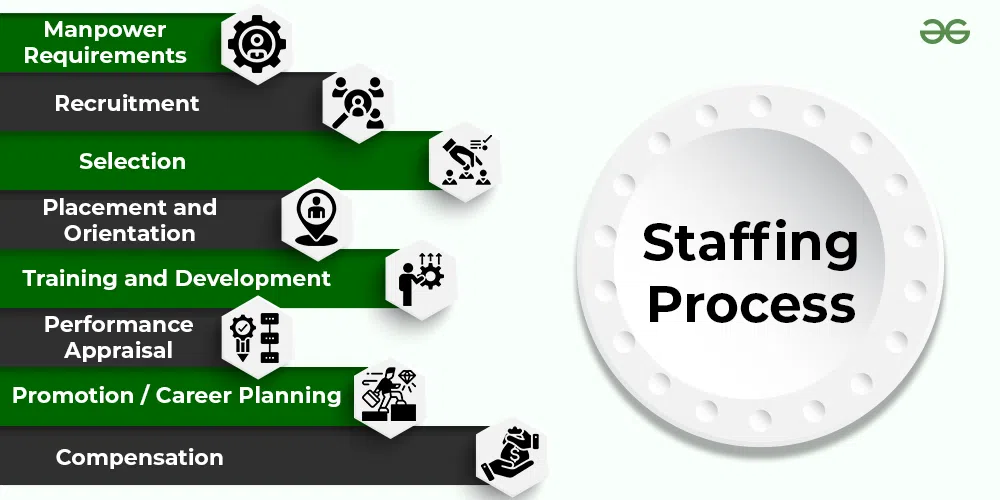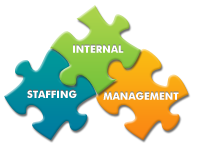Letting Loose the Power of Information: Enhancing Human Resources Approaches With Cutting-Edge Staffing Monitoring Software
In the rapidly evolving landscape of human resources, the utilization of data has become a pivotal force in forming organizational success. As business aim to stay agile and competitive, the assimilation of sophisticated staffing monitoring software stands apart as a transformative tool in streamlining human resources procedures. By taking advantage of the power of data analytics, organizations can not just boost their recruitment techniques but additionally maximize worker retention and productivity. The harmony in between data-driven insights and advanced modern technology provides a compelling possibility for human resources professionals to revolutionize their strategy in the direction of talent monitoring.
Significance of Data-Driven Human Resources Techniques
Data-driven HR methods make it possible for companies to optimize their workforce administration, employment procedures, and staff member engagement initiatives. By evaluating data associated to worker efficiency, turn over prices, and ability voids, Human resources divisions can recognize fads, forecast future demands, and develop proactive solutions to address challenges.
Data-driven HR strategies also play a vital function in improving worker fulfillment and retention. With the analysis of worker comments, performance reviews, and training outcomes, HR specialists can customize specific advancement plans, recognize high-potential employees, and cultivate a society of constant knowing and growth within the company. In addition, data-driven understandings allow HR groups to straighten their methods with the general business purposes, making certain that skill management initiatives straight add to business success.
Benefits of Staffing Administration Software
Using staffing management software program improves the employment and onboarding processes for human resources departments, boosting effectiveness and precision in skill acquisition. One considerable benefit of this software application is the capacity to streamline prospect data, making it conveniently accessible for employment teams. By having all applicant details in one location, human resources experts can successfully track candidate progression, communicate properly with potential hires, and make sure a seamless recruitment experience.
In addition, staffing management software application often includes attributes such as resume parsing and search phrase matching, which help in swiftly recognizing top candidates that match the task needs. This automation reduces the time invested on hand-operated resume screening, enabling human resources team to focus on more tactical jobs. staffing management software. In addition, these systems can incorporate with job boards and social networks platforms, broadening the reach of work posts and attracting a diverse pool of candidates
Additionally, analytics and reporting devices within staffing administration software program give valuable insights into recruitment metrics, such as time-to-fill and cost-per-hire. This data-driven method allows HR teams to make educated decisions, enhance recruitment methods, and enhance general employing procedures. By leveraging these advantages, organizations can improve their skill purchase efforts, enhance candidate experience, and ultimately construct a solid labor force.
Enhancing Employment Processes With Data
By leveraging information, companies can make even more educated choices throughout the recruitment lifecycle, ultimately leading to far better hires and improved retention prices. One essential way information improves employment processes is by maximizing task postings based on insights from previous successful hires.
In addition, data analytics can improve the testing and option procedure by determining patterns in candidate certifications and efficiency indications. Overall, integrating data into employment procedures encourages companies to make smarter working with decisions and build high-performing teams.
Improving Employee Retention With Innovation

One method innovation can improve worker retention is with the use of employee engagement platforms. These systems permit real-time responses, acknowledgment, and interaction between employees and management, fostering a society of admiration and assistance. Furthermore, technology can enable personalized understanding and growth programs tailored to individual staff member demands and occupation goals, increasing work contentment and commitment.
Furthermore, information analytics devices can help companies determine fads and patterns associated with employee turnover, allowing them to take proactive actions to attend to potential concerns before they rise. next page Generally, by leveraging technology properly, organizations can develop a much more engaging and helpful work atmosphere that encourages workers to expand and stay within the firm.
Optimizing Workforce Efficiency With Data

Via the evaluation of data, HR divisions can recognize patterns and fads that impact productivity levels. For instance, by tracking staff member job hours and task completion rates, get more organizations can optimize work routines to make sure that jobs are successfully dispersed amongst employee. In addition, information can disclose ability spaces within the workforce, enabling HR to execute targeted training programs that enhance employee capabilities and overall productivity.
Furthermore, data-driven efficiency analyses make it possible for supervisors to supply particular feedback and support to staff members, cultivating a society of constant improvement. Overall, leveraging information to maximize labor force efficiency is a calculated method that empowers companies to accomplish their goals effectively and successfully.
Final Thought
To conclude, utilizing sophisticated staffing administration software can significantly boost human resources strategies by leveraging the power of information. By integrating data-driven recruitment procedures, improving staff member retention with technology, and making best use of labor force productivity, companies can improve their procedures, make more enlightened decisions, and inevitably accomplish better success useful source in managing their human resources. Accepting these technical developments is crucial in the ever-evolving landscape of human source management.
Data-driven HR techniques enable business to maximize their workforce management, employment procedures, and employee engagement efforts. By assessing data related to worker efficiency, turn over prices, and skill gaps, HR divisions can recognize fads, predict future needs, and establish aggressive remedies to address challenges.
